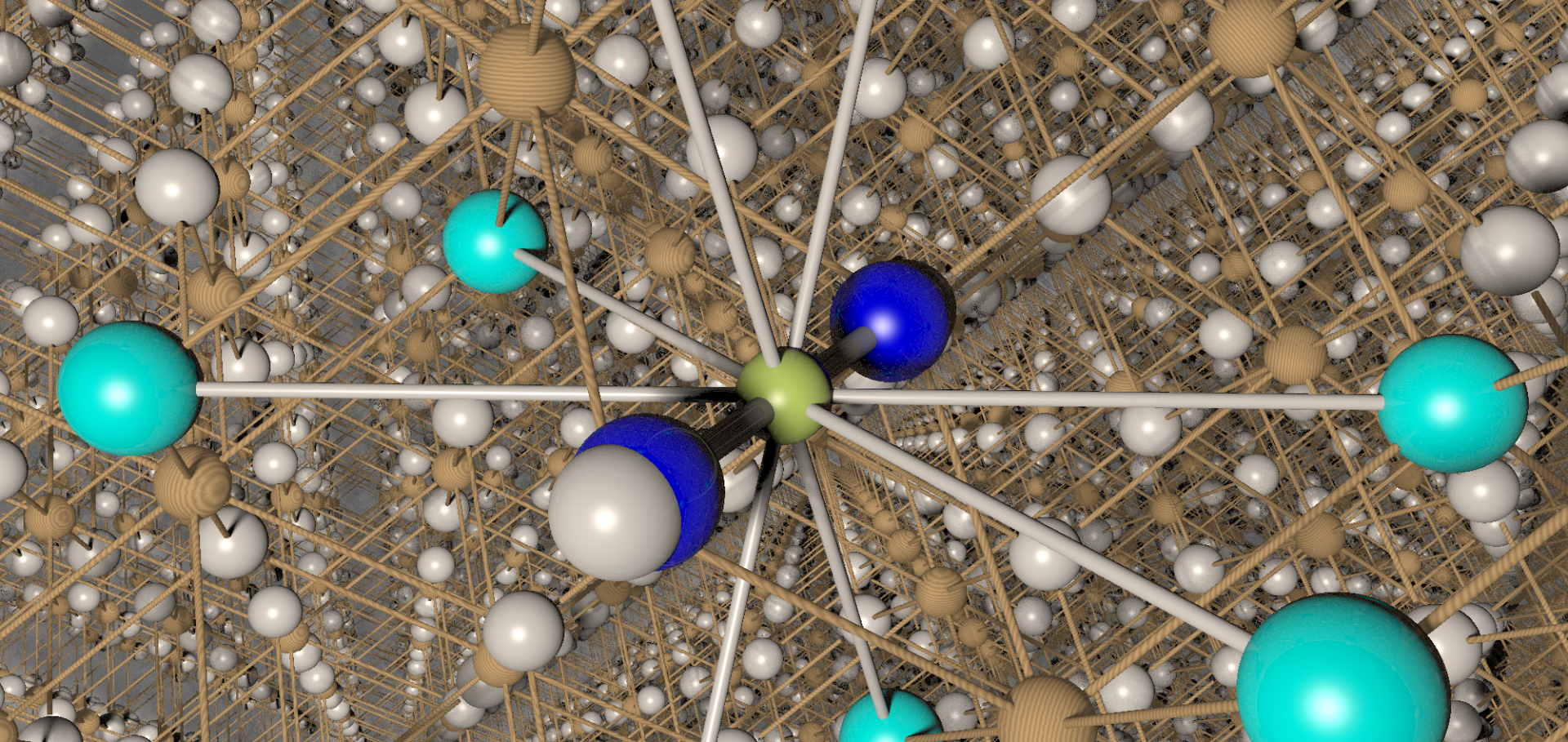FeTi$_2$O$_5$: a spin Jahn-Teller transition tuned by cation substitution
Physical Review B American Physical Society 100 (2019) 094401
Abstract:
We have used muon-spin rotation, heat capacity and x-ray diffraction measurements in combination with density functional theory and dipole field calculations to investigate the crystal and magnetic structure of FeTi$_2$O$_5$. We observe a long range ordered state below 41.8(5) K with indications of significant correlations existing above this temperature. We determine candidate muon stopping sites in this compound, and find that our data are consistent with the spin Jahn-Teller driven antiferromagnetic ground state with k=(1/2,1/2,0) reported for CoTi$_2$O$_5$. By comparing our data with calculated dipolar fields we can restrict the possible moment size and directions of the Fe$^{2+}$ ions.Magnetic monopole noise
Nature Springer Nature 571:7764 (2019) 234-239
Abstract:
Magnetic monopoles1-3 are hypothetical elementary particles with quantized magnetic charge. In principle, a magnetic monopole can be detected by the quantized jump in magnetic flux that it generates upon passage through a superconducting quantum interference device (SQUID)4. Following the theoretical prediction that emergent magnetic monopoles should exist in several lanthanide pyrochlore magnetic insulators5,6, including Dy2Ti2O7, the SQUID technique has been proposed for their direct detection6. However, this approach has been hindered by the high number density and the generation-recombination fluctuations expected of such thermally generated monopoles. Recently, theoretical advances have enabled the prediction of the spectral density of magnetic-flux noise from monopole generation-recombination fluctuations in these materials7,8. Here we report the development of a SQUID-based flux noise spectrometer and measurements of the frequency and temperature dependence of magnetic-flux noise generated by Dy2Ti2O7 crystals. We detect almost all of the features of magnetic-flux noise predicted for magnetic monopole plasmas7,8, including the existence of intense magnetization noise and its characteristic frequency and temperature dependence. Moreover, comparisons of simulated and measured correlation functions of the magnetic-flux noise indicate that the motions of magnetic charges are strongly correlated. Intriguingly, because the generation-recombination time constant for Dy2Ti2O7 is in the millisecond range, magnetic monopole flux noise amplified by SQUID is audible to humans.Solid state physics, volume 68
Contemporary Physics Taylor & Francis 60:3 (2019) 275-276
Local magnetism, magnetic order and spin freezing in the 'nonmetallic metal' FeCrAs.
Journal of physics. Condensed matter : an Institute of Physics journal 31:28 (2019) 285803-285803
Abstract:
We present the results of x-ray scattering and muon-spin relaxation ([Formula: see text]SR) measurements on the iron-pnictide compound FeCrAs. Polarized non-resonant magnetic x-ray scattering results reveal the 120° periodicity expected from the suggested three-fold symmetric, non-collinear antiferromagnetic structure. [Formula: see text]SR measurements indicate a magnetically ordered phase throughout the bulk of the material below [Formula: see text] K. There are signs of fluctuating magnetism in a narrow range of temperatures above [Formula: see text] involving low-energy excitations, while at temperatures well below [Formula: see text] behaviour characteristic of freezing of dynamics is observed, likely reflecting the effect of disorder in our polycrystalline sample. Using density functional theory we propose a distinct muon stopping site in this compound and assess the degree of distortion induced by the implanted muon.Determining the anisotropy and exchange parameters of polycrystalline spin-1 magnets
(2019)


